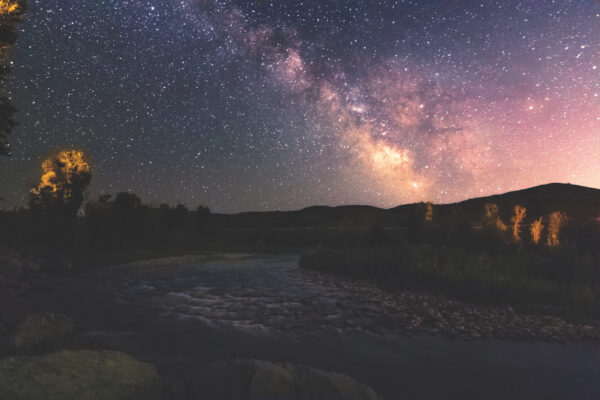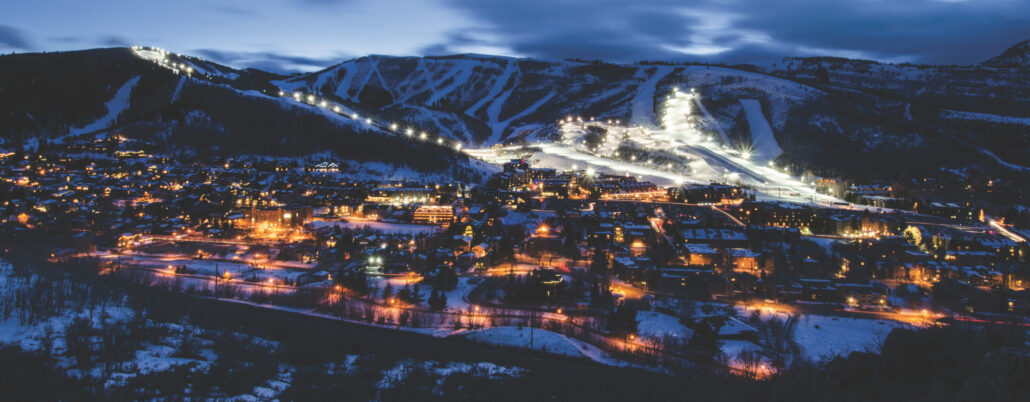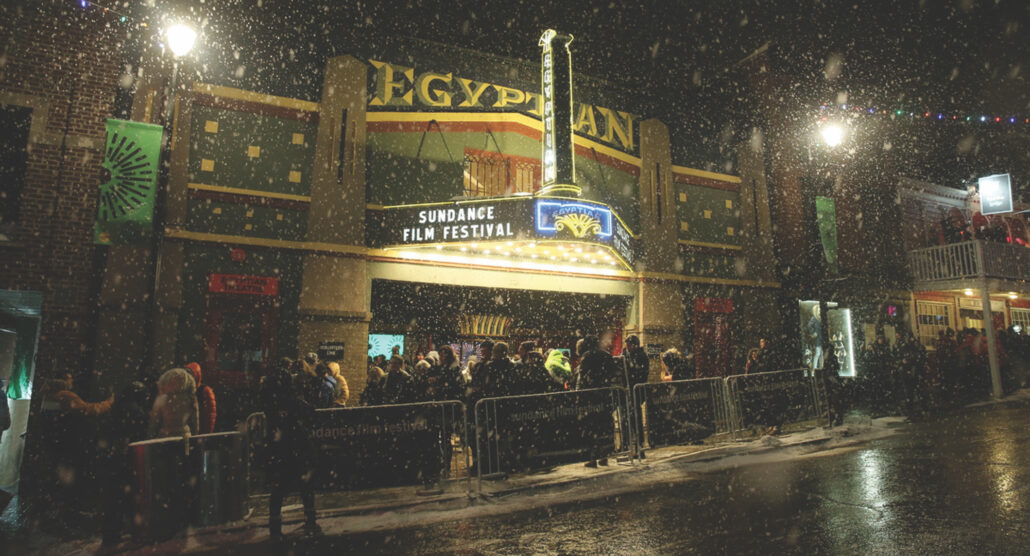
Your guide to stargazing in Jordanelle State Park
Eyes on the sky
Winter/Spring 23-24
Written By: Leigh Wilson | Images: Gina Gardner / TrailsXposed Photography
There are more International Dark Sky Parks and Communities in Utah than anywhere else in the world. And under the direction of Park Manager Jason Whittaker, Jordanelle State Park east of Park City became a Dark Sky Park in 2021. According to Jason, it took a lot of work to get the international designation, which requires inky-black skies, ample light mitigation, and public education efforts, but he says it was absolutely worth the effort.
The park schedules a few stargazing events each quarter, including a New Year’s snowshoe hike and a stargazing event. The events bring together naturalists, teachers and amateur astronomers to guide the public through night sky viewing.
If you’re visiting on your own, Jason says the best spot in the park for stargazing is in the Rock Cliff area, near the boat ramp. This part of the park is where you’ll find the “more natural side of Jordanelle” with the least development. It is protected on three sides from light pollution and tends to have fewer people and darker skies. Visitors can access the Rock Cliff area 24-hours a day, every day of the year.
Those who can’t make the trip to the more remote Rock Cliff area, can head to Hailstone or Ross Creek, where many of the park’s stargazing events are held.
For optimal stargazing, visit Jordanelle State Park on a clear, cloudless night, preferably on a new moon. With the right conditions, it is not uncommon to see the Milky Way stretching out above the park.
In addition to events at Jordanelle, the Salt Lake Astronomical Society often hosts star parties, and Compass Rose Lodge in Huntsville, Utah, hosts star-walk tours in their observatory.
THIS WINTER’S BIGGEST CELESTIAL EVENTS
When it comes to stargazing, Utah is second to none. Around 80 percent of the state’s 3.3 million residents live along the Wasatch Front, meaning the rest of the state has very little light pollution to contend with. This winter, Utahans and visitors will be treated to a handful of meteor showers.
December 13-14, 2023: The Geminids Meteor Shower is the largest meteor shower of the year, with an average of 75 multi-colored meteors per hour. The shower will peak on the night of December 13 and into the early hours of December 14, 2023.
January 3-4, 2024: Shortly after the Geminids Meteor Shower, the smaller Quadrantids Meteor Shower will take place. Viewers can expect to see around 40 meteors per hour.
April 21-23, 2024: The final meteor shower of winter 2023-2024 is the Lyrids Meteor Shower. The peak of the event will fall between the late evening of April 21 and dawn of April 22. You might be able to see some meteors on April 23, but that day also marks the arrival of a bright, full moon, which will impact visibility.

